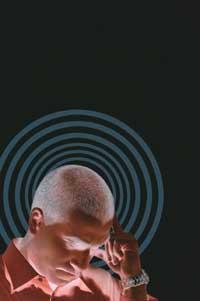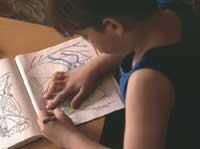Influence of reading on the brain
2009/12/13 Kortabitarte Egiguren, Irati - Elhuyar Zientzia

This is what a group of experts has investigated. That is, he has researched how the structure of our brain changes as we learn to read. The team is led by the scientific director of the Basque Center on Cognition, Brain and Language of Donostia. The research is very curious. In fact, to carry out this research, an extraordinary sample has been used: Ex-members of the Colombian guerrillas.
Understanding how the brain changes as we learn to read is a challenge for researchers. And, as we mentioned above, most of us learn to read when we are children, when there are many other changes in the brain. Therefore, it is practically impossible to distinguish the changes that occur in the brain during childhood due to the teaching of reading the changes that produce other skills or skills.

It is also very difficult to detect these changes in which they learn to read in adults, since in literate societies, in most cases, these cases are associated with learning and neurological problems. For this reason, undoubtedly, the work with former comrades of the Colombian guerrilla has been a unique opportunity to see how the brain changes when learning to read, as indicated by the researchers in the article published in the prestigious journal Nature.
The brains of twenty former guerrillas who participated in a literacy program and twenty others without literacy have been analysed. Magnetic resonance imaging of the brains of both groups has been compared. The results show that grey matter (processing zone) is denser among those who have learned to read in different areas of the two cerebral hemispheres. These spaces are responsible for the knowledge of the letters, the translation of the letters in the corresponding sounds and the meaning of the words. Reading also increased the density of white matter that generates brain connections and the strength of these connections.
Conjecture Conjecture Conjecture Conjecture

Brain connections are made from the area and point of the brain known as angular circumvolution. It is not a new fact. For more than 150 years scientists have known that this is an important reading space. However, this research has shown that the importance of this space in the reading process has not been correctly understood to date.
Previously it was thought that the angular circumvolution had the responsibility of knowing the forms of words before resorting to their sounds and meaning. Currently, researchers have seen that it has a predictive function, which anticipates letters through meaning, as well as the predictive function of advancing letters in text messages in mobile messages.
The researchers have stated that all these discoveries will help people with problems in the long-term reading process, such as those who have dyslexia,” in the article published in the prestigious journal Nature.
Published in 7k

Gai honi buruzko eduki gehiago
Elhuyarrek garatutako teknologia





